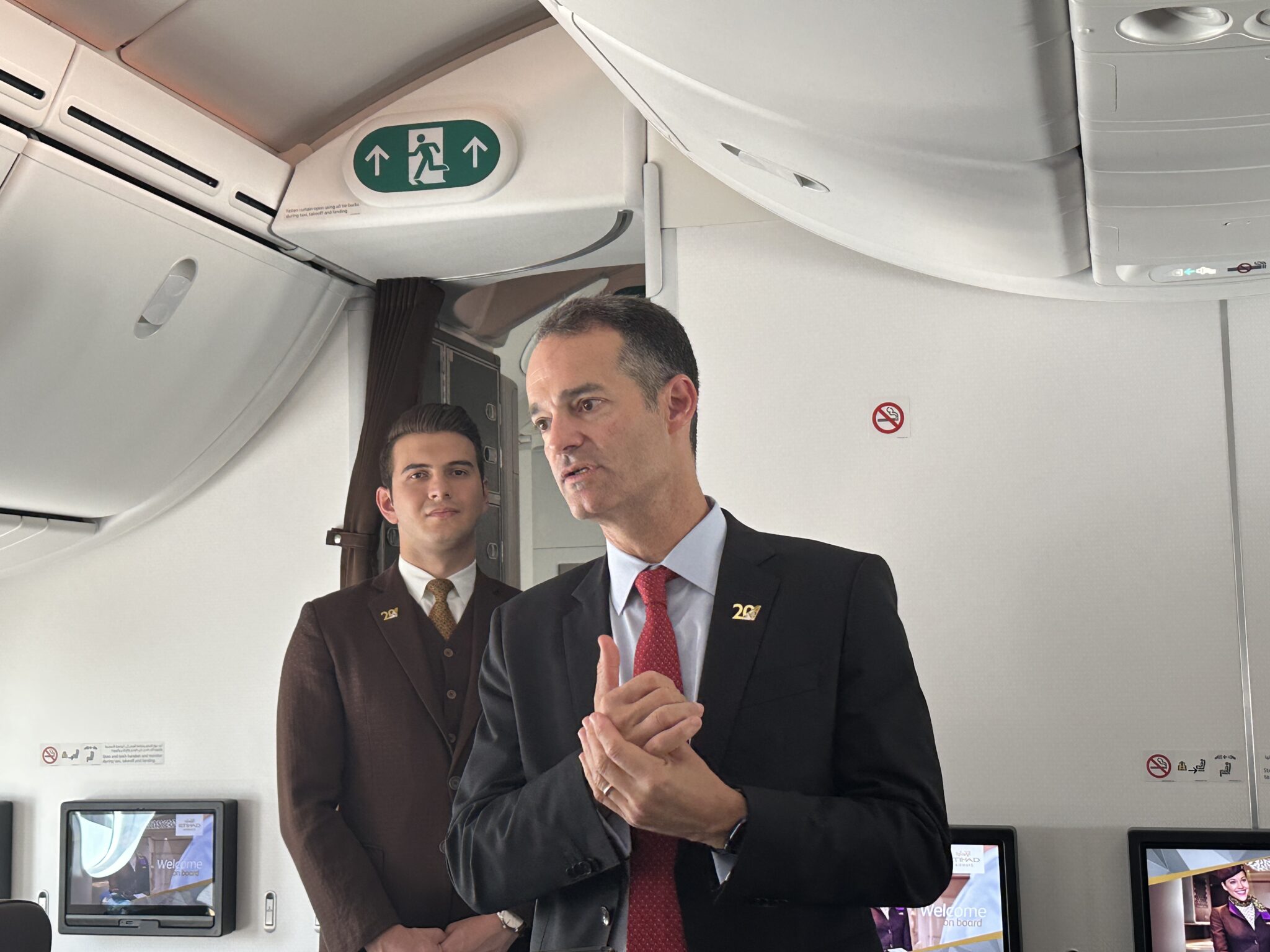Skift Take
Abu Dhabi’s Etihad spectacularly shrunk after a surge of growth in its first 15 years. Now it is charting out a new, sustainable growth path.
Antonoaldo Neves arrived on the scene of Middle Eastern aviation in October 2022 as CEO of the Etihad Aviation Group. He was fresh from his role as CEO of TAP, the National Airline of Portugal, where he led a major turnaround.
Addressing the media on board Etihad’s latest Boeing 787 aircraft, fitted with its new suites, Neves talked about the past 20 years of Etihad and the road ahead.
Etihad Plans to Double the Fleet in 7 Years
Etihad is now operating under a growth plan for the next seven years, internally known as Journey 2030. Neves said the airline plans to double the fleet size to 150 aircraft. The airline currently carries about 13 million passengers a year and wants to get to 33 million.
This year, the airline added 16 new aircraft and grew about 35% – next year, it hopes to grow 20% – 25%.
One of his biggest challenges: Supply chain delays. Neves complains that plane deliveries are delayed and expects the problem to last another 2 – 3 years.
Etihad to Bank on New Destinations and Additional Frequencies
Etihad added 12 new destinations in 2023 and will start new flights into India (Thiruvananthapuram and Kozhikode), Boston and Nairobi.
Additionally, eight cities had already seen growth in frequencies as of August 2023, as per local newspaper The National.
Partnerships Are Key to Etihad’s Growth
Etihad has invested in 20 partnerships this year, and it expects to make more partnership announcements over the next six months. Neves said the airline usually starts with a codeshare and a frequent flyer partnership and then explores other opportunities, such as partnering on MRO, buying fuel, etc.
When questioned by Skift about joining SkyTeam, given its closeness to Air France KLM, Neves said, “Right now, we are dating,” and he intends to deal with a lot of airlines to see where they fit.
Abu Dhabi’s International Airport’s Terminal A Is Critical
Neves said Etihad’s move to Terminal A in Abu Dhabi was critical for customer experience. He said the airport was fully equipped with contact gates, and that would mean no buses.
From a sustainability perspective, the aircraft will draw air-conditioning from the airport itself when parked without having to burn fuel to keep the lights on.
He said that by 2030, Etihad will take over most of the capacity of the terminal since it will have 30 – 33 million passengers of its own using the terminal (Terminal A is designed for 45 million passengers per year).
Will Etihad Bring Back More A380 Aircraft?
Etihad had 10 Airbus A380 aircraft, and put them into storage during the pandemic. It did not intend to operate them again, but demand came back stronger than expected post-pandemic. It has so far brought three A380s back to service and will bring back one more, with all four operating flights to London Heathrow.
Neves said that while the airline continues to study options for the A380 to serve another city, there was no decision yet. And the airline won’t let go of its A380s; it intends to keep them in storage for now.
The Daily Newsletter
Our daily coverage of the global travel industry. Written by editors and analysts from across Skift’s brands.
Have a confidential tip for Skift? Get in touch
Tags: a380, abu dhabi, airbus, Etihad Airways
